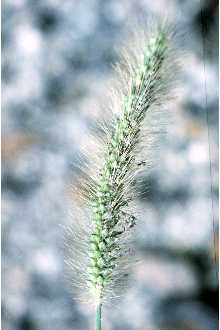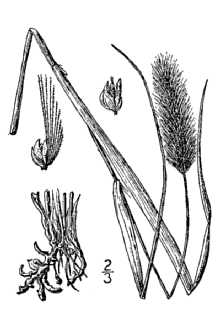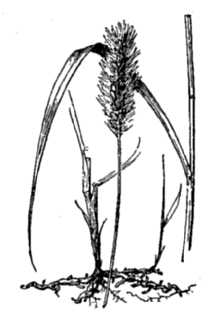Setaria geniculata (Wild.) P. Beauv., nom. illeg.
Scientific Name: Setaria geniculata (Wild.) P. Beauv., nom. illeg.

| General Information | |
|---|---|
| Usda Symbol | SEGE |
| Group | Monocot |
| Life Cycle | Perennial |
| Growth Habits | Graminoid |
| Native Locations | SEGE |
Plant Guide
Use soil moisture sensors to measure the soil moisture of Setaria geniculata (Wild.) P. Beauv., nom. illeg..
Fact Sheet
Alternate Names
knotroot bristlegrass, yellow bristlegrass, knotroot foxtail, marsh bristle grass
Uses
Marsh bristlegrass is grazed moderately by livestock, usually during the spring and summer. It becomes unpalatable in the fall and provides poor forage after maturity. When grazed for roughage, it should be supplemented with a mineral and protein concentrate. Birds readily eat the seeds.
Status
Please consult the PLANTS Web site and your State Department of Natural Resources for this plant’s current status, such as, state noxious status and wetland indicator values.
Description
Grass Family (Poaceae). Marsh bristlegrass is a warm-season, weak, rhizomatous perennial. The height ranges from 1 to 3 feet. The leaf blade is flat, about 6 to 10 inches long, 1/4 inch wide, prominent midrib, and upper surface covered with soft hair. The leaf sheath is rounded with generally shorter than average internodes and often purple tinged. The ligule is a fringe of short hair. The seedhead is a spikelike panicle, 1 to 2 inches long, and yellowish in color with each spikelet surrounded by 5 or more yellow or purple bristles. Robert H. Mohlenbrock @ plants.usda.gov
Management
This grass is seldom abundant enough to be a key management species, Use soil moisture sensors to measure the soil moisture of Setaria geniculata (Wild.) P. Beauv., nom. illeg.., For maximum production, no more than 50 percent of current year's growth by weight should be removed during growing season, Summer grazing deferments of at least 90 days every 2 to 3 years improve plant vigor, This grass can withstand controlled burning if done after September,
Establishment
It grows from late March or early April until fall from short, knotty, branching rhizomes. Foliage is a distinctive whitish green. The base of the plant is slender and wiry. It produces two and sometimes three seed crops during one growing season-the first one during May or June. Bristles are left along the seed stalk after the seeds disseminate. It grows best on moist or wet sites. In Florida, it grows on wet sandy soils, sloughs, and acid flatwoods. In Texas and Louisiana, it grows well on salty prairie sites; also grows on salt marshes if water level is relatively low. Cultivars, Improved and Selected Materials (and area of origin) Please contact your local NRCS Field Office.


